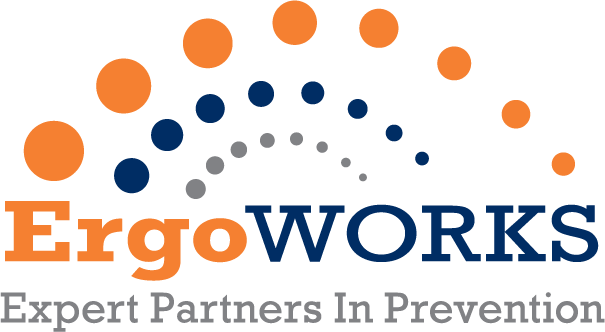Discover how to maintain a healthy and strong back while working at a job that involves lifting, pushing, and pulling. Learn about the importance of stretching, taking short breaks, and assessing your body for signs of soreness or discomfort.
Understanding the Risks: Common Back Injuries in Jobs with Lifting
Working at a job that involves lifting, pushing, and pulling can be tough on your back without proper technique and education. Common back injuries in jobs that include lots of lifting include muscle strains and herniated discs. It is important to know the risks of heavy lifting and take steps to prevent injuries.
To help prevent back injuries, it is crucial to maintain proper lifting techniques. Always lift with your legs, not your back, and avoid twisting or bending while lifting heavy objects. Additionally, using proper equipment such as height adjustable tables and powered pallet jacks can reduce the frequency of lifting. Ergonomics and injury prevention professionals can help educate and equip employees with the necessary tools to lower the risk of injury.
It is also important to be aware of the weight limits set by your employer and follow them to avoid overexertion. If a load is too heavy or awkward to lift on your own, ask for assistance or use mechanical aids such as dollies or forklifts.
By understanding the risks and taking necessary precautions, you can reduce the likelihood of experiencing back injuries while working at a job with lifting.
Stretching Exercises: Essential for a Strong Back
Stretching is an easy way to obtain a strong and healthy back while lifting at your job. Regular stretching helps to improve flexibility, increase blood flow to the muscles, and reduce the risk of muscle strains and injuries.
Some effective stretching exercises for the back include the cat-camel stretch, seated forward bend, standing side bend, and child's pose. These stretches target both the upper and lower back as well as shoulders.
It is important to incorporate stretching into your daily routine, especially before and after lifting or engaging in physically demanding tasks. Take a few minutes to stretch your back muscles, holding each stretch for two to three deep breaths. Remembering to breathe deeply and relax will maximize the benefits of stretching.
In addition to stretching, weight training such as back extensions and rows can help to build muscle endurance and support your spine. Consult with an occupational therapist or fitness professional to learn the proper techniques for these exercises.
By incorporating stretching exercises into your daily routine and focusing on strengthening your back muscles, you can improve your overall back health and reduce the risk of injuries.
Taking Short Breaks: Resting your Back for Optimal Performance
Taking short breaks throughout the day is crucial for resting your back and maintaining optimal performance while working at a job with lifting. Continuous lifting, pushing, and pulling can put strain on your back muscles and increase the risk of fatigue and injuries.
During your breaks, it is important to give your back muscles a chance to rest and recover. Take a few minutes to stretch, walk around, or change positions to relieve any built-up tension in your back. This can help to improve blood circulation and reduce muscle fatigue.
In addition to taking short breaks, it is also important to practice proper ergonomics while working. With the help of an occupational therapist or ergonomic professional, ensure that your work station is set up correctly, with your chair and desk at the appropriate height and your computer monitor at eye level. This can help to maintain good posture and minimize strain on your back.
Regular short breaks can make a significant difference in preventing back injuries and maintaining your overall well-being. So, make it a priority to take breaks throughout your workday.
Assessing Your Body: Recognizing Signs of Soreness
Regularly assessing your body for signs of soreness or discomfort is essential for maintaining a healthy back while working at a job with lifting. Ignoring early warning signs can lead to the development of more serious injuries or chronic pain.
Pay attention to any pain, stiffness, or discomfort in your back. These can be signs of muscle strain or overuse. If you feel persistent or worsening pain, seek medical attention or advice from an occupational therapist to prevent further damage.
In addition to pain, be mindful of other symptoms such as numbness or tingling in your back or extremities, loss of range of motion, or difficulty performing daily activities. These can indicate more serious conditions that require immediate medical attention.
By regularly assessing your body and listening to its signals, you can take proactive measures to prevent injuries and maintain a healthy and strong back.
Additional Tips: Equipment and Techniques for Back Protection
In addition to stretching, taking breaks, and assessing your body, there are additional tips and techniques you can use to protect your back while working at a job with lifting.
Using proper lifting equipment, such as pallet jacks and height adjustable work surfaces, can reduce the strain on your back muscles. These tools help reduce the risk of injuries by reducing the number of times lifting is required at your job.
It is also important to be mindful of your body mechanics while lifting. Avoid sudden movements, jerking motions, or lifting heavy objects from an awkward position. Instead, plan your lifts, use your legs to generate power, and keep the load close to your body.
Additionally, maintaining a healthy lifestyle outside of work can contribute to the overall health and strength of your back. Engage in regular exercise, eat a balanced diet, and get enough rest and sleep to support your body's recovery process.
By implementing these additional tips and techniques, you can further protect your back and minimize the risk of injuries while working at a job with lifting.


